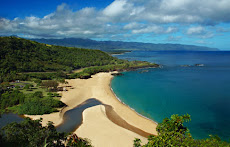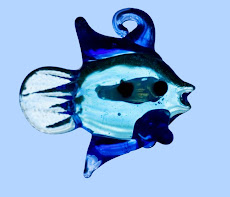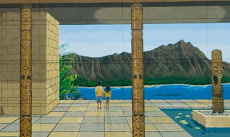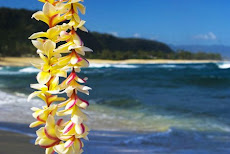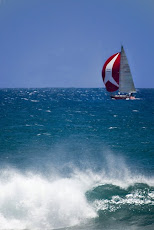Thursday, February 28
Celebrating outstanding achievements by Native performers
News From Indian Country
As the sun melted into the ocean, people began gathering at the ritzy
Century City Plaza Hotel in Beverly Hills for the 10th Annual First
Americans in the Arts (FAITA) extravaganza on February 2nd. Beautifully
attired women and men greeted old friends and caught up on what had been
happening in each other's lives, exchanged business cards and talked about
future events.
In the dining room, where dinner was followed by the award show, were three
large IMAX screens which allowed everyone unrestricted visibility of the
presenters, award winners, the ...
The sculptures of Allan Houser Haozous at the Olympics

News From Indian Country
Entering the 2002 Winter Olympics, athletes from all over the world were
welcomed by the larger-than-life bronze sculpture, "Sacred Rain Arrow,"
created by one of the most important American artists of the 20th century,
the internationally respected Master sculptor Allan Houser Haozous.
A Warm Springs Chiricahua Apache, Allan Houser was proud of his heritage,
which he portrayed in "Sacred Rain Arrow," a sculpture of a young Apache
warrior shooting his arrow towards the heavens with the hope of carrying a
prayer for rain to the Spirit World.
Full Story and photos
Celebrating outstanding achievements by Native performers Celebrating outstanding achievements by Native performers

Westerly, Suzanne
News From Indian Country
10th Annual First Americans in the Arts
As the sun melted into the ocean, people began gathering at the ritzy
Century City Plaza Hotel in Beverly Hills for the 10th Annual First
Americans in the Arts (FAITA) extravaganza on February 2nd. Beautifully
attired women and men greeted old friends and caught up on what had been
happening in each other's lives, exchanged business cards and talked about
future events.
In the dining room, where dinner was followed by the award show, were three
large IMAX screens which allowed everyone unrestricted visibility of the
presenters, award winners, the entertainment, and the wonderful film clips
that preceded each award winner.
Over ten years ago, ...
Read the rest HERE
Saturday, February 23
Thoughts of Bison Roaming Wild and Free Over the Land, full story
|
|
| |
| (Many Paths) | ||
| An Online Newsletter Celebrating Native America | ||
| February 23, 2002 - Issue 55 | ||
|
| ||
| Thoughts of Bison Roaming Wild and Free Over the Land | ||
| by Suzanne Westerly "Canku Ota" Correspondent | ||
| credits: Photo of Danny and Jonette by Suzanne Westerly |
|
Before the bright rays of sunshine appear over Picuris Peak in Northern New Mexico to warm the secluded valley where the Pueblo of Picuris sits, Danny Sam, the Bison Manager, has already begun his day amongst the Pueblos herd of 25 bison; make that 26. "The bison usually give birth very early or very late in the day," Danny explained, "and it's rare to be able to witness a birth. It was wonderful to be there." Danny talked enthusiastically about how their herd started with the Pueblos acquisition of one pregnant buffalo cow in 1991. These big beautiful bison are very special to Danny's family, and to all the people at Picuris Pueblo. But Danny, Jonette and their two children; Daniel 12, and Maria,10 spend many hours caretaking their four-legged friends, and have a special bond with them. "We love the bison, that's for sure," said Danny. "It's been a whole learning experience for us. You don't find too much information on bison." Creating a Sustainable Economy Since Danny has taken over as Bisonkeeper, he and Jonette, who is the Assistant Bison Manager, have been focusing on finding outside sponsors to help the program grow. They hope to expand the bison's grazing land by acquiring about a thousand acres of land somewhere east of the Pueblo, "where there is some good grass, a better habitat." That means putting up a lot of fences that are "bison-proof." Since bison's natural instinct is to roam freely for their food, and because of their size and power, fences must be especially sturdy. That requires writing grant proposals for funding, which is part of Jonette's responsibilities. Educating the Youth How Do You Vaccinate a Bison? "We try to use a real subtle approach. Right now, myself and Jonette can get all of them into the corral, and we can run them through the alleyways and chute system on our own. We try to keep it real nice and easy-going and try not to upset them too much. You know, when you get a lot of people out there and everybody is yelling, I think that just really upsets them a lot. So we try to keep quiet and keep our movements down to a minimum and let them decide to go in the corral, not us pushing them!" he said. "You don't want to get any gentle nudges from them, that won't be to good if they use their horns. The bull weighs over 2,000 pounds I'm sure." Danny hopes the bison program will grow big enough to employ his children and others on the Pueblo one day so they don't have to leave the Pueblo to find jobs. "It's going to take time to develop, and I think the money will come if our heart's in the right place you know." Bison Were Essential To Life Besides using the hide as leather for clothing, footwear and teepees, there were many others uses for the entire buffalo. "There is a rawhide box made out of buffalo, and its got different things in it, like a bladder that's been washed and dried and made into a water container, another one that's been dried and folded and made into a pouch for carrying porcupine quills. The hooves, the horns, made into bowls, into spoons, ladles and tools. Bones were used for painting with, and for toys. ITBC has a poster available that shows the bison's anatomy and all the ways the body parts were used, probably thirty uses. Everything was used even the undigested grass in their belly, it was used for paint and the manure was used for fuel in the old days,” said Danny Sam, Bison Manager at Picuris Pueblo in New Mexico. The Intertribal Bison Cooperative Excerpts taken from ITBC's Mission Statement, & History They gathered in the Sacred Black Hills of South Dakota on a cold February day in 1991. With only four days prior notice, nineteen tribes from all four directions braved the harsh Dakota winter to attend. Lakota representatives from most of the reservations in South Dakota were there, as well as the Crow, Shoshone-Bannock, Gros Ventre /Assinoboine and Blackfeet Nations of Montana. Various Pueblo representatives from New Mexico pulled in, and the Winnebago, traditionally called Ho Chunk, from both Nebraska and Wisconsin came. Choctaw Nation of Oklahoma, and some as far west as Round Valley of California arrived. Some of these tribes were historically enemies, but now they unite for a common mission . . . Our History . . . The American buffalo, also known as bison, has always held great meaning for American Indian people. To Indian people, buffalo represent their spirit and remind them of how their lives were once lived, free and in harmony with nature. In the 1800's, the white-man recognized the reliance Indian tribes had on the buffalo. Thus began the systematic destruction of the buffalo to try to subjugate the western tribal nations. The slaughter of over 60 million buffalo left only a few hundred buffalo remaining. Without the buffalo, the independent life of the Indian people could no longer be maintained. The Indian spirit, along with that of the buffalo, suffered an enormous loss. At that time, tribes began to sign treaties with the U.S. Government in an attempt to protect the land and the buffalo for their future generations. The destruction of buffalo herds and the associated devastation to the tribes disrupted the self-sufficient lifestyle of Indian people more than all other federal policies to date. To reestablish healthy buffalo populations on tribal lands is to reestablish hope for Indian people. Members of the Intertribal Bison Cooperative (ITBC) understand that reintroduction of the buffalo to tribal lands will help heal the spirit of both the Indian people and the buffalo. The Intertribal Bison cooperative was formed in 1990 to coordinate and assist tribes in returning the buffalo to Indian country. In April of 1992 tribal representative gathered in Albuquerque, New Mexico. It was at that meeting that the Intertribal Bison Cooperative (ITBC) officially became a recognized tribal organization. Today ITBC has a membership of 42 tribes with a collective herd of over 8,000 bison. Membership of ITBC remains open and there is continued interest by non-member tribes in the organization. "We recognize the bison is a symbol of our strength and unity, and that as we bring our herds back to health, we will also bring our people back to health."
|
|
| ||
|
| ||
|
| ||
Looking at Where Native People Stand in Contemporary Native America, full story
|
|
| |
| (Many Paths) | ||
| An Online Newsletter Celebrating Native America | ||
| February 23, 2002 - Issue 55 | ||
|
| ||
| | Looking at Where Native People Stand in Contemporary Native America | |
| by Suzanne Westerly "Canku Ota" Correspondent | ||
| credits: photos of Duane and some members of NAFTA by Suzanne Westerly |
 Just back from the Sundance Film Festival in Park City, Utah, where his film Running On Indian Time premiered; exuberant young filmmaker, Duane Allen Humeyestewa said, "The experience was a huge success!" Exhausted, but energized from the positive responses he received after his film was seen by a packed audience, he proclaimed, "The whole experience was overwhelming, but positive" and that he was "ready for the next movie." Just back from the Sundance Film Festival in Park City, Utah, where his film Running On Indian Time premiered; exuberant young filmmaker, Duane Allen Humeyestewa said, "The experience was a huge success!" Exhausted, but energized from the positive responses he received after his film was seen by a packed audience, he proclaimed, "The whole experience was overwhelming, but positive" and that he was "ready for the next movie." With a challenging schedule of going back and forth from California to New Mexico he only finished filming last November. The film was accepted for the Sundance Film Festival at the end of November, the editing was done by December, the sound finished in January, and then he left for Sundance January 8th. Quite a whirlwind! "His resourcefulness paid off. Despite the low budget, Humeyestewa wanted the look of a major motion picture." Growing up on a High Desert Mesa Duane spent his young life up on a high desert mesa learning the ways of his people. His family also instilled in him the "ambition to do something for myself." Realizing he had a lot to learn if he was going to "do things right," he focused on his education. Though young, he knew he wanted to "make it" in the contemporary world outside of the village of Mishongnovi, the First Village on Second Mesa, in the Land of the Hopi people. "When I was fairly young, I wanted to be a filmmaker. I remember reading short stories that I wrote in fifth and sixth grade." One of Duane's teachers had published a book filled with stories the children in her class had written. He came across it again when he was older. In it, there were several stories he had written while the other kids had one or two. "It made me wonder, why was I the only one writing? Then I had a mini epiphany, I was supposed to be writing; those articles were my first published works." It was one of the only times, he said, that he felt good about "the BIA education system. We seldom had opportunities like that. The routine was always go to school for art, have recess and come home. So I give credit to a lot of those teachers who really pushed and helped shape me into what I am." From Hopi to Hollywood "I was always influenced by film," he said. "I remember going from the village, Mishongnovi, down to the school or the community center building where 16 mm films from Hollywood were shown on Friday nights. I would always go down there; me and all these adults, and I'd watch every film." Coming from a supportive family, Duane was raised "with lots of ambition to do something for myself. I knew for a fact that I would definitely adapt into the mainstream world and culture at some point, and I made it a point to go away." "I always knew I needed training," he said. To others interested in filmmaking, his suggestion is, "go to college or an academy - you have to have training," he said earnestly. "It's a difficult thing to do, to make it as a filmmaker. You can dabble, but you'll just be a dabbler the rest of your life - you must have training." So at thirteen, he left Hopi to attend a Prep school in Phoenix, AZ. After prep school, he attended Loyola Maramount University, then transferred to the University of New Mexico (UNM) where he "focused on the technical design aspect of theatre, film, and TV" and "essentially to study the Southwest. I did it to understand more thoroughly the culture and the depth of the history of the people," he explained, "and to embellish myself in the arts." While in New Mexico, Duane worked on a variety of projects including theatre, television and films. He left New Mexico after graduating at the top of his class and with a knowledge "about where Native people stand in contemporary Native America - where we are as a people in relation to the people around us. Where we could go with the technology we have today." In both 1997 and 1998 Duane was chosen to participate in the Sundance Institute filmmaker's lab in Utah. There he gained valuable insight into independent filmmaking, and was committed "to filmmaking for the rest of my life." Setting His Sites on Future Goals "It's my lifetime goal and career, it's who I am," he continued. "I'm going to make it a point to help and assist Native people throughout the country in getting some of this information out there, to educate people around the world. Essentially, tell the truth. There are so many art mediums for presenting your story and sharing your information with the world. Movies are just one way." "One goal is to correct the wrongs that Hollywood has presented," Duane continued. "It's a cliche'; everybody says it - we've all talked about it; how they screwed up the portrayal of Native Americans and the world in general. We acknowledge that. We want to move on. We want to set it straight for the rest of the world." "I wouldn't be here if it wasn't for having a strong family foundation, a strong cultural foundation and a really positive upbringing," said Duane softly. "One of the things that I naturally found myself fascinated with was the dynamics of how Native people, specifically Hopi, interacted with the outside world and how we even survived as long as we have with as much influence as we've had." His new film Running on Indian Time isn't about Hopi, but it is about Pueblo people. Filmed in Santa Fe, Albuquerque, Zia, and Laguna Pueblo, Duane explains his film as, "a mini celebration of tribe, family, and individuality." Running on Indian Time is very emotional, poignant and beautiful. His film gives the audience a glimpse and feel of what it is like to be a part of today's Pueblo society, as Duane blends a mixture of contemporary social issues with traditional ideologies. He feels people only want to see "period Native pieces when they're romanticized. Then it becomes Not Native. It becomes Hollywood. And that's what I don't want," he said with conviction. Duane believes that to "collaborate and network is important. You have to collaborate to some degree. There is always uncertainty about how it's going to go, how it's going to pay off. Some people don't want to collaborate, but I have to decide, look the only way we're going to survive is collaborating. It's a risk, it's always a risk. I took a chance moving, took a chance going to school, we take chances everyday. Getting in your car you take a chance." "The whole goal is getting from point A to point B, and dealing with some of the issues in-between; obstacles, roadblocks, positive moments, negative moments, they're just a part of life," he said philosophically. With his energy, Duane will certainly make things happen, look for his films, Humeyestewa is a name you will remember, a new voice in cinema. The Sundance Film Festival is held every January in Park City, Utah, Salt Lake City, Utah, and Sundance, Utah. The Sundance Institute was founded by Robert Redford twenty one years ago. It was dedicated to the development of artists of independent vision and to give them the opportunity to exhibit their new work. Redford wanted to enhance the artistic vitality of the American film. Today, Sundance Institute, supports and helps in the development of emerging screenwriters and directors of vision, and to the national and international exhibition of new, independent dramatic and documentary films. On January 25th, it was announced that Robert Redford has been chosen to receive an Honorary Award by the Board of Governors of the Academy of Motion Picture Arts and Sciences. The citation will read: "Robert Redford - Actor, Director, Producer, Creator of Sundance, inspiration to independent and innovative filmmakers everywhere." N. Bird Runningwater (Cheyenne, Mescalero Apache) currently serves as an advisor to the Sundance Institute's Native Film Program, which is based in Beverly Hills, California. Bird is a graduate of the University of Oklahoma with degrees in Journalism and Native American Studies, he received his Master of Public Affairs degree from the University of Texas at Austin's LBJ School of Public Affairs. He is involved in a multitude of projects. One is being on the National Editorial Advisory Board for YES! A Journal of Positive Futures. In an article written for the YES! Journal, Bird shares his thoughts about Native Americans in the film industry. Titled, “smoke signals” he writes,” After years of misrepresentation in the media, Native American filmmakers are taking control of their own stories, including in a new breakthrough film produced, directed, and written by Native Americans.” He goes on to say, “Inaccuracies and stereotypes undermine indigenous languages and cultures because the mainstream media promotes assimilation. The inaccuracies also affect the political process that is so vital to upholding tribal sovereignty and the relations between the 557 tribal nations in the US and the federal government.” Referring to the Sundance Festival in 1998 when the wonderful film Smoke Signals premiered, Bird writes, “Now, almost 20 years later, a movement that has not been visible to many is coming into its own. Last January at the Sundance Film Festival in Utah, the first feature film written, co-produced, and directed by Native Americans premiered. It has since been distributed and shown nationally at hundreds of theaters. That film, Smoke Signals, is the result of 20 years of hard work by the Native media world. It is also hard evidence that we are finally reaching a point where Native audiences don’t have to search the television and movie screens as hard as my cousin Cathy and I did for a small glimpse of our lives.” Go to http://www.futurenet.org/8Education/runningwater.htm for Bird’s full article, and to http://www.sundance.org for more on the Sundance Institute. Suzanne Westerly was based in the Los Angeles area. As of May, 2003, she can be reached at suzanne@photosofaloha.com, 808-781-5112 |
|
| ||
| Canku Ota is a copyright © 2000, 2001, 2002 of Vicki Lockard and Paul Barry. | ||
Thoughts of Bison Roaming Wild and Free Over the Land

February 23, 2002
Before the bright rays of sunshine appear over Picuris Peak in Northern New Mexico to warm the secluded valley where the Pueblo of Picuris sits, Danny Sam, the Bison Manager, has already begun his day amongst the Pueblos herd of 25 bison; make that 26.
Read Full Story HERE
More on Picuris Pueblo
Friday, February 15
"Running on Indian Time" premieres at Sundance
News From Indian Country
Just back from the Sundance Film Festival in Park City, Utah, where his
film Running On Indian Time premiered; exuberant young filmmaker Duane
Allen Humeyestewa said, "The experience was a huge success!"
Exhausted, but energized from the positive responses he received after his
film was seen by a packed audience, he said, "The whole experience was
overwhelming, but positive" and that he was "ready for the next movie."
With a challenging schedule of going back and forth from California to New
Mexico, he finished filming last November. The film ...
First Peoples TV has arrived

News From Indian Country
Suzanne Westerly
Something many of us have been hoping for has arrived. Finally, a
nationwide television network that will give Americans a global
perspectives on news, events and culture - WorldLink TV.
WorldLink TV premiered January 17th with a new weekly series by and about the tribal peoples of the world. The first program was "Reason to Fear; The Cultural Defense of Hooty Croy." First Peoples TV will feature twenty-six
award-winning documentaries and dramas focusing on the lives of contemporary Native and Aboriginal people and the issues they face.
First ...
Read Full Story HERE
Movie-making handbook from a Native American perspective
02-15-2002
News From Indian Country
It's 5:30 A.M. and the sun won't even be up for a couple more hours. While
many in Hollywood are just going to sleep, Natalie is already working out
with and encouraging one of her women clients.
An ACE Certified Personal Trainer, Natalie gets women motivated and in
shape to eventually run marathons, but that's just a small part of what
this amazing woman is all about.
Actress, writer, filmmaker, Natalie Noel (Choctaw) is ambitious, and filled
with an abundance of positive energy. Natalie is in the final stages of
filming her first documentary. ...
Monday, February 11
Teachers Are Offered Wonderful Opportunities to Teach in Indian Country

Last spring, the Bureau of Indian Affairs (BIA) Office of Indian Education Programs (OIEP) moved from Washington, D.C. to Albuquerque, New Mexico. The new southwest location enticed two very special people to it. Barbara Parisian (Blackfeet) and Darrell Flyingman (Choctaw), are both dedicated to educating American Indian youth, and were ready to take on their new challenge; filling vacancies in the BIA school system. But how?
the rest of the story
Saturday, February 9
First Peoples TV Has Arrived [Full Story]
|
|
| |
| (Many Paths) | ||
| An Online Newsletter Celebrating Native America | ||
| February 9, 2002 - Issue 54 | ||
|
| ||
| First Peoples TV Has Arrived | ||
| by Suzanne Westerly Canku Ota Correspondent | ||
| Photo of Elaine Miles and Drew LaCapa on the set of Rez Robics by Suzanne Westerly |
 Something many of us have been hoping for has arrived. Finally, a nationwide television network that will give Americans a global perspectives on news, events and culture – “WorldLink TV.” Something many of us have been hoping for has arrived. Finally, a nationwide television network that will give Americans a global perspectives on news, events and culture – “WorldLink TV.” “WorldLink TV” premiered January 17th with a new weekly series by and about the tribal peoples of the world. The first program was Reason to Fear; The Cultural Defense of Hooty Croy. "First Peoples TV" will feature twenty-six award-winning documentaries and dramas focusing on the lives of contemporary Native and Aboriginal people and the issues they face. "First Peoples TV" will be the first time a regularly scheduled TV series concerning tribal peoples will be accessible to all urban areas, including the territories of every Indigenous nation in the United States. DreamCatchers, a non-profit organization working to bring Native films to a wider audience, is bringing this together to air eachThursday night at 7pm PST or 10pm EST. So far the line-up includes documentaries confronting fishing rights; Lighting The Seventh Fire by Sandra Sunrising Osawa, sacred sites; Backbone Of The World by George Burdeau, and religious freedom; The Peyote Road by Fidel Moreno. The series will also feature dramatic films dealing with government attempts to destroy tribal cultures; Where The Spirit Lives by Bruce Pittman and Indigenous political activism; Tushka by Ian Skorodin. We will get to see Native actors, comedians and educators introducing each episode. Hosts will include Benjamin Bratt (Law & Order, Blood In-Blood Out, Pinero), Tantoo Cardinal (Legends Of The Fall, Black Robe, Dances With Wolves), Steve Reevis (Geronimo, Last Of The Dogmen, Fargo), Elaine Miles (Northern Exposure, Smoke Signals, RezRobics) and up and coming Apache funny man, Drew Lacapa. The one non-Native host will be legendary historian of world religions, Huston Smith. Where To Find It You can get WorldLink TV through direct-to-home satellite services; DIRECTVÆ (Channel 375) and EchoStar's DISH NetworkÆ (Channel 9410). DreamCatchers has previously produced health and fitness videos for American Indian communities including, The Red Road To Sobriety, documenting the contemporary Native American sobriety movement, and Rez Robics, a pow-wow dancing and martial arts inspired aerobics video designed to combat diabetes. Series producer Gary Rhine has previously produced award-winning documentaries including Wiping The Tears Of Seven Generations and Your Humble Serpent; The Wisdom Of Reuben Snake. You can find program descriptions at http://www.dreamcatchers.org/fptv |
|
| |
Following the Footsteps of His Grandfather, full story
|
|
| |
| (Many Paths) | ||
| An Online Newsletter Celebrating Native America | ||
| February 9, 2002 - Issue 54 | ||
|
| ||
| Following the Footsteps of His Grandfather | ||
| by Suzanne Westerly Canku Ota Correspondent | ||
| Photos of Roscoe and Eagle Young by Suzanne Westerly |
 "I got my big break as a dancer, and I worked my way into acting because it was my big dream, to act. I really love it here in Hollywood, it was something I always wanted," said Roscoe Pond smiling. Sitting outside on a breezy balcony in a restaurant at the Beverly Connection, a shopping center on the edge of Beverly Hills, Roscoe talked about his journey to Hollywood. Roscoe's life revolves around auditioning for (and getting some) acting roles, dancing and writing, while also working in an exciting new Southern California Indian Center (SCIC) Employment and Training (E&T) Program in audio/visual production. "It's been a long road, but it's been a really good learning experience," he said in his soft deep voice as he sipped some water. "I got my big break as a dancer, and I worked my way into acting because it was my big dream, to act. I really love it here in Hollywood, it was something I always wanted," said Roscoe Pond smiling. Sitting outside on a breezy balcony in a restaurant at the Beverly Connection, a shopping center on the edge of Beverly Hills, Roscoe talked about his journey to Hollywood. Roscoe's life revolves around auditioning for (and getting some) acting roles, dancing and writing, while also working in an exciting new Southern California Indian Center (SCIC) Employment and Training (E&T) Program in audio/visual production. "It's been a long road, but it's been a really good learning experience," he said in his soft deep voice as he sipped some water. At the early age of ten, Roscoe found happiness singing and acting while his brothers and sister found happiness playing sports. A member of the Confederated Tribes of Umatilla, Walla Walla and Cayuse People, Roscoe Patrick Pond, was a young boy with a dream and a lot of determination. Knowing how his son felt, one-day Roscoe's dad said to him, "if you want to perform, and if you want to see what it ís like out there, you should go [to the Chemawa Indian School]." I said, "okay I will. Actually, it was my grandfather's idea, and that's how my life began," said Roscoe. Roscoe's grandfather wanted his son to go to the same boarding school that he went to, the Chemawa Indian School in Salem, Oregon, but unlike his father, Roscoe's dad didn't want to leave the Reservation. Roscoe, though, was more like his jazz musician grandfather whose dreams were interrupted by WWII. Like his grandfather, Roscoe knew that leaving the reservation was the first step toward realizing his goals. Adventure and music beckoned him as it had his grandfather. After graduating from Portland State University, Roscoe headed for New Mexico, where he joined the DayStar Dance Company run by Rosalie M. Jones. "I was with Daystar from 1990 - 1997. "Then I graduated from dancer to actor, then lead actor." On the road performing with Daystar, a chance meeting changed his life. The Last of the Mohicans (starring Wes Studi) was being filmed in South Carolina. That was Roscoe’s his first audition for a Hollywood film. Although he didn't get a role, it was his start in "the business." Roscoe arrives in Hollywood In 1998 Roscoe found an agent. After being with her for a year "she asked me to get all my hair cut off, It was down to my lower back." She felt his long hair only allowed him to be in Native American roles. What about tradition? "Our people didn't have long hair. Except for my great great granduncle, who was a chief of the Umatilla's in the 1930's.” Roscoe didn't want to cut his hair, but he did. "So if I go on a Native American audition I can put the wig on and 'look' Native American. I just had to compromise, and that's what you have to do sometimes." Southern California Indian Center Employment and Training Program (see sidebar) SCIC and Eyapaha Institute (see sidebar) had formed a partnership to build a program that would teach all aspects of the film industry to Native Americans. Chuck Banner, Director of Entertainment & Multi-Media of the Eyapaha Institute and the Senior VP of Production & Development at Red Crow Creations is the curriculum's project director. The program includes learning "everything that goes with filming, producing and editing movies, ... including computer training. ... I never knew anything about computers until a year ago, and now I am just flourishing," Roscoe remarked with a grin.
What worked for Roscoe? Roscoe loves to learn. "An education at a major university was just incredible and it really did push me into what I wanted to do, you just can't ever let go of learning." Also of importance to Roscoe is health. "It all comes down to what you're eating and drinking. I'm finding out that drinking water, about five glasses a day is important. Pop has so much sugar; it's so bad, like alcohol. Water is good," he said as he finished his glass of water and eagerly headed off for an audition.
Photojournalist POB 564 Malibu, CA 90265 mobile, 310-924-5522 |
|
| ||
|
| ||
| Canku Ota is a free Newsletter celebrating Native America, its traditions and accomplishments . We do not provide subscriber or visitor names to anyone. Some articles presented in Canku Ota may contain copyright material. We have received appropriate permissions for republishing any articles. Material appearing here is distributed without profit or monetary gain to those who have expressed an interest. This is in accordance with Title 17 U.S.C. section 107. | ||
| Canku Ota is a copyright © 2000, 2001, 2002 of Vicki Lockard and Paul Barry. | ||
|
|
| |
| The "Canku Ota - A Newsletter Celebrating Native America" web site and its design is the | ||
| Copyright © 1999, 2000, 2001, 2002 of Paul C. Barry. | ||
| All Rights Reserved. | ||


 PICURIS PUEBLO, NM - "The government used the bison to take land away from Indian people, now we want to use the bison to acquire the land back for ourselves. That's our goal. We'd like to see the bison roaming again. Strong herds, not just little ranch herds, we want to see wild herds. They are good for the land."
PICURIS PUEBLO, NM - "The government used the bison to take land away from Indian people, now we want to use the bison to acquire the land back for ourselves. That's our goal. We'd like to see the bison roaming again. Strong herds, not just little ranch herds, we want to see wild herds. They are good for the land." 
 A few months ago, on a warm and sunny afternoon in Hollywood, a group of actors, writers and directors, met for a NAFATA (Native American Film And Television Alliance) meeting at the Autry Museum of Western Heritage. After the meeting we stood talking in the parking lot under the trees, the green rolling Hollywood Hills as a backdrop. Duane talked enthusiastically about his present project; a film he wrote, and was about to direct and produce, called Running On Indian Time. How did he get from Hopi to Hollywood?
A few months ago, on a warm and sunny afternoon in Hollywood, a group of actors, writers and directors, met for a NAFATA (Native American Film And Television Alliance) meeting at the Autry Museum of Western Heritage. After the meeting we stood talking in the parking lot under the trees, the green rolling Hollywood Hills as a backdrop. Duane talked enthusiastically about his present project; a film he wrote, and was about to direct and produce, called Running On Indian Time. How did he get from Hopi to Hollywood?  Roscoe didn't know anyone when he first got to Hollywood, so like many struggling actors, he found a job in the fast-food industry. He later discovered there was a lot of help for Native Americans in LA. (See sidebar)
Roscoe didn't know anyone when he first got to Hollywood, so like many struggling actors, he found a job in the fast-food industry. He later discovered there was a lot of help for Native Americans in LA. (See sidebar)  Roscoe and Eagle Young (from Taos Pueblo, NM), also an actor, are the first two trainees in this new program. "We got to film all the Indian activities at SCIC, including the PowWow, projects like the FAITA (First Americans in the Arts) Awards web cast, and Floyd's (Red Crow Westerman) gala for "The Hoop of Life." Besides taping, Roscoe and Eagle also do the editing. "Paula Starr, the Executive Director of SCIC has been really supportive of us, and I am very thankful to her for that," said Roscoe enthusiastically.
Roscoe and Eagle Young (from Taos Pueblo, NM), also an actor, are the first two trainees in this new program. "We got to film all the Indian activities at SCIC, including the PowWow, projects like the FAITA (First Americans in the Arts) Awards web cast, and Floyd's (Red Crow Westerman) gala for "The Hoop of Life." Besides taping, Roscoe and Eagle also do the editing. "Paula Starr, the Executive Director of SCIC has been really supportive of us, and I am very thankful to her for that," said Roscoe enthusiastically. 







